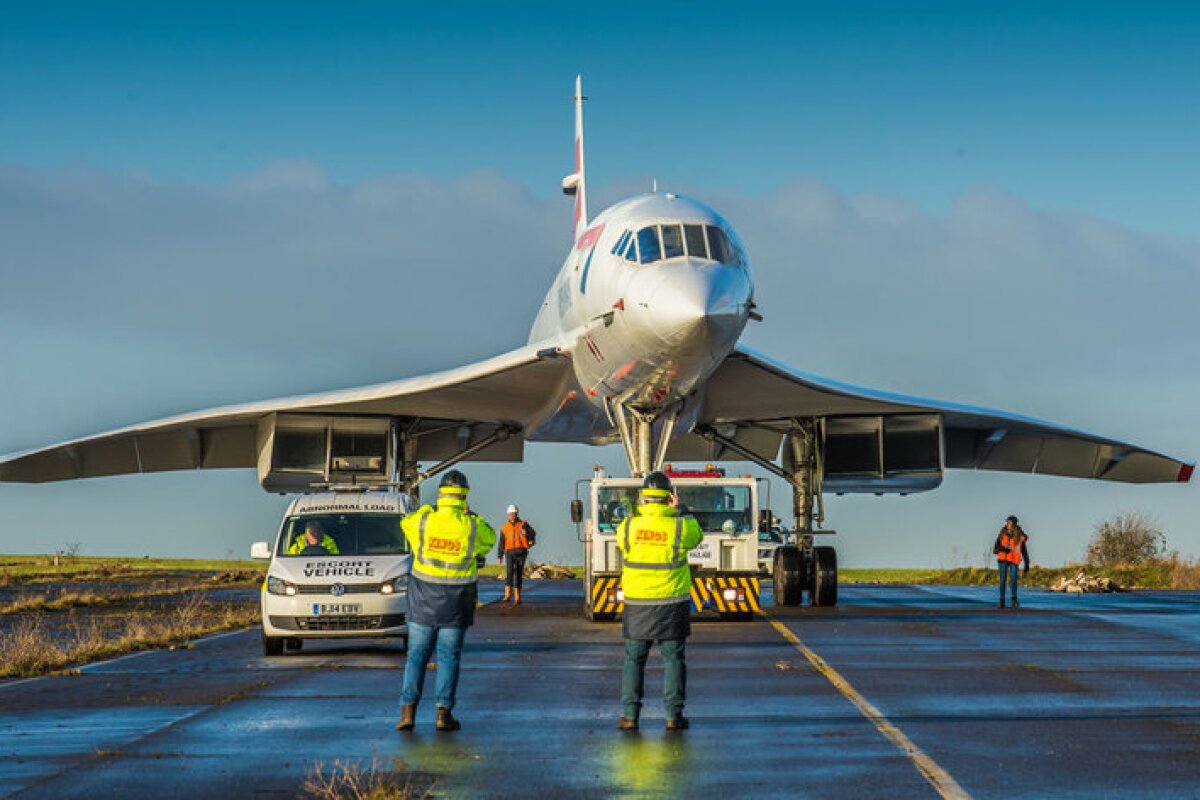After sitting on the tarmac for over 13 years, the last Concorde supersonic passenger airplane has made its final journey. At Bristol Filton Airport, UK, British Airways' Concorde Alpha Foxtrot or No. 216 was towed along the runway from its old home to a purpose-built hangar that's part of the Aerospace Bristol museum, which is scheduled to open later this year. Alpha Foxtrot was not only the last Concorde to be built, it was also the last to enter service in 1979 and the last to fly in 2003.
According to Aerospace Bristol, today's move to the £19 million (US$23 million) museum was carried out by engineers from British Airways and Airbus. Using a standard runway towing vehicle, the aircraft traveled to a specially built hangar that had to have one wall removed to allow the supersonic passenger plane to get inside with only a meter (3.3 ft) to spare on each wingtip.
Alpha Foxtrot is the last of the 18 surviving Concordes to find a permanent home. At the time of its development in the 1960s by BAC and Sud Aviation, the Anglo-French supersonic airliner was regarded as a project comparable to the Apollo Moon landings. The first Concorde prototype made its maiden flight in 1969 and the first production model entered service in 1976.

Unlike conventional airliners, Concorde could cruise at over twice the speed of sound at Mach 2.04 (1,354 mph or 2,180 km/h) and carried up to 128 passengers in first class comfort. Though it was seen as the harbinger of a new era of supersonic passenger travel, its high operating costs, the rocketing fuel prices of the 1970s, and environmental regulations that prohibited it from operating over land restricted it to only a few intercontinental air routes. The result was high praise, but empty order books.
In the end, only 20 Concordes were built with 14 going into service with Air France and British Airways – and those only because they were national airlines subject to government orders. Despite this, Concorde remained a favorite with the "jet set" and remained in service until 2003 when the post 9/11 downturn in commercial air travel and a fiery crash of No. 203 outside Charles De Gaulle Airport in 2000 led to the decision to retire the fleet.
Alpha Foxtrot was the 20th and last Concorde to be built. It entered service in April 1979 and was the last Concorde to fly, landing at Filton on November 26, 2003. Since then, it has been maintained by Airbus UK.
"We couldn't be more delighted to welcome Concorde 216 into her new purpose-built home at Aerospace Bristol," says Iain Gray, Chairman of Aerospace Bristol. "With such enthusiasm for Concorde in this country, and particularly in Bristol where she was designed, built and landed for the final time, it is only fitting that this magnificent aircraft should have a permanent home at Filton. I would like to thank all of our donors for helping to make Aerospace Bristol a reality and look forward to welcoming our first visitors on board this summer."
Source: Aerospace Bristol






